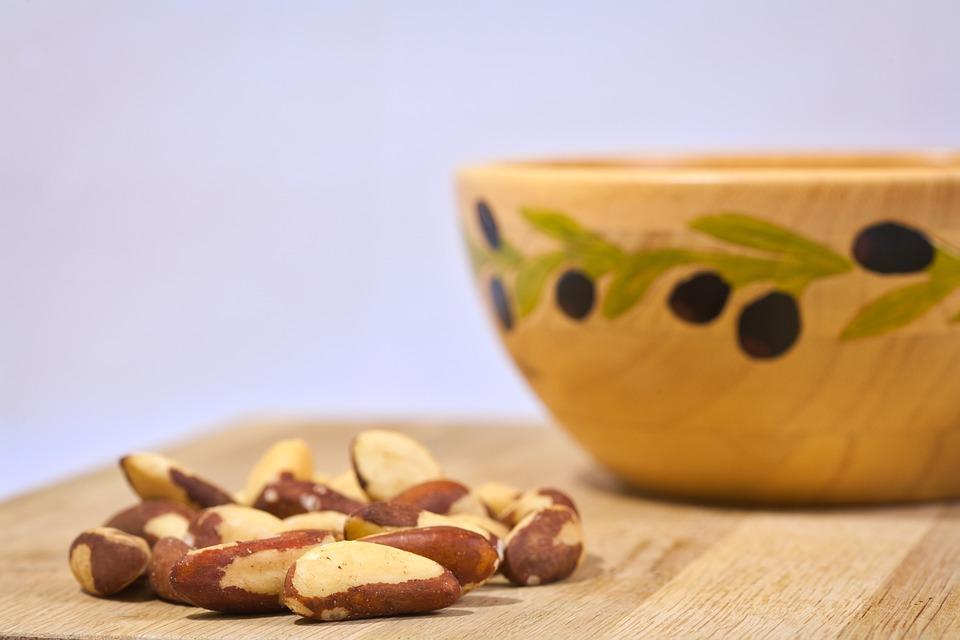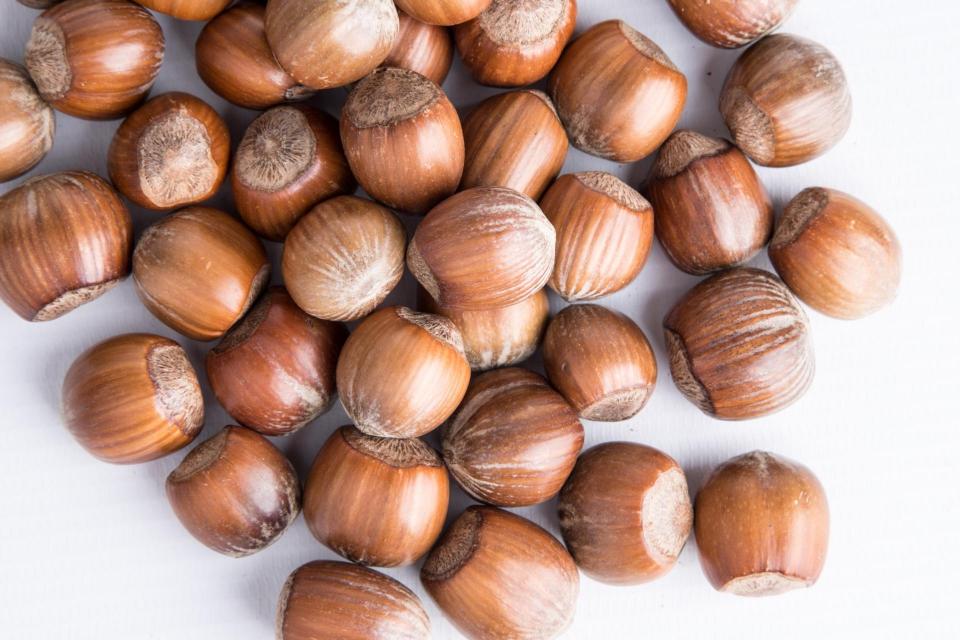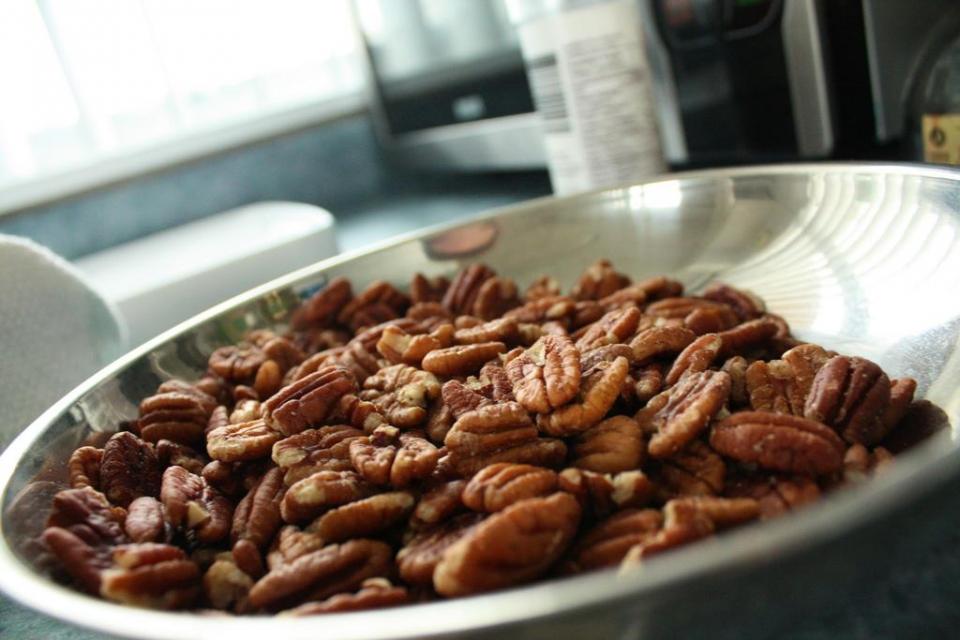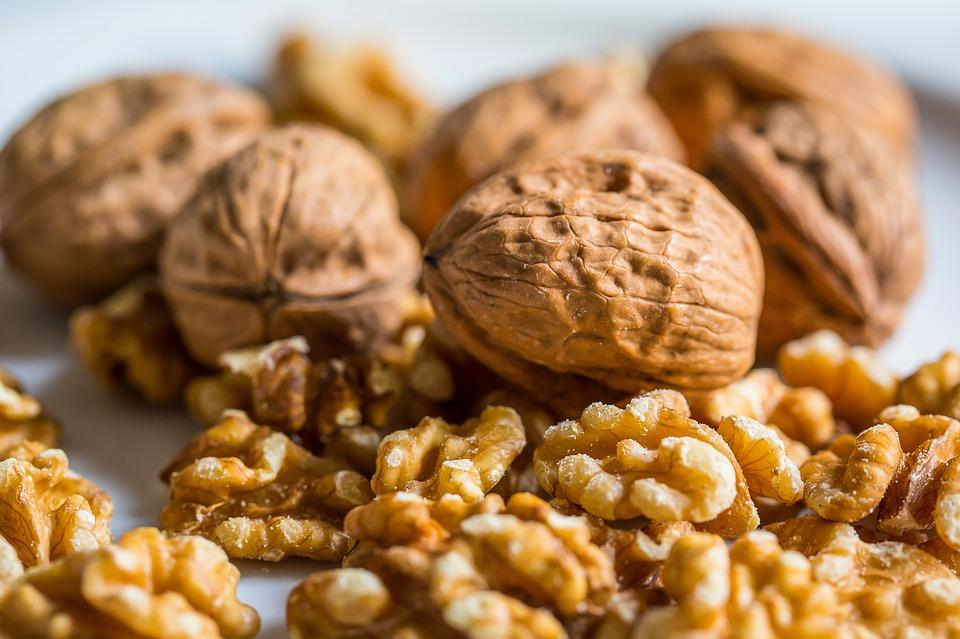Here’s How Nutritious Your Favorite Nut Really Is

Pixabay
Unless you’re someone who suffers from a nut allergy (we’re sorry), you probably enjoy a batch of mixed nuts from time to time. And dare we say, you might even have an absolute favorite nut that you insist on tossing in every smoothie bowl, overnight oats jar and batch of freshly baked bread. And if you do, good for you.
When enjoyed in moderation, nuts can be one of the best sources of healthy fats in our diets. Loaded with monounsaturated fats alongside a modest amount of protein, eating nuts can leave you feeling fuller for longer, avoiding unnecessary (and unhealthy) snacking in between your main meals of the day. They also supply a hefty dose of omega-3 fatty acids and vitamin E to your body, keeping your brain, skin and cells happy.
However, not all nuts are created equal when it comes to their nutritional profiles and health benefits. So let’s take a deeper dive into this food category, shall we? Here are all of the health benefits of nuts, broken down by type of nut.
Almonds
A favorite of the health-minded folks out there, raw almonds stack up nicely when it comes to nutrition. They have twice as much monounsaturated fat (the good kind) as saturated fat (the not-so-great kind), a balanced amount of fiber and a quality boost of protein. One serving supplies more than a third of your daily vitamin E, 32 percent of your daily manganese and 20 percent of your daily magnesium needs. They also contain a decent amount of copper, vitamin B2 (riboflavin) and phosphorus.

Pixabay
Brazil Nuts
Raw Brazil nuts are another solid option full of healthy fats, but they also serve as a good source of important nutrients like magnesium, zinc, calcium, vitamin E and B vitamins. However, what makes this nut a shining star is the fact that it’s a rich source of selenium. You only need to eat five or six Brazil nuts a day to get all of the selenium you need, which boosts your immune system and prevents damage to your nerves and cells. That single serving also has the power to help lower your total cholesterol and LDL cholesterol (the bad kind) specifically.
Cashews
These babies make a slightly sweet and oh-so-smooth nut butter that we love, and they have some solid nutritional benefits, too. The levels of heart-healthy fats in the raw cashew nut not only lower LDL cholesterol, but also raise HDL cholesterol (the good kind). They’re pretty low in fiber but make up for it in their protein count. Cashews also contain a lot of copper and a healthy amount of zinc. And since they’re a cholesterol-free food, they’re great for your heart health. Clearly, a small handful can go a long way.
Chestnuts
Every American’s beloved holiday nut, chestnuts are lower in fat than other nuts and higher on the fiber scale, making them a friend of your digestive system. They’re also a lot higher in carbohydrates than most other nuts, which means you’ll actually experience an energy crash after eating these guys. But before you lose your energy, you’ll enjoy a nice surge of B vitamins and manganese, an antioxidant that counters free radicals in your system and reduces your risk of cancer and heart disease. Not too shabby for a holiday treat.

Public Domain Pictures
Hazelnuts
When Ferrero Rocher isn’t covering these bad boys in milk chocolate, they’re working wonders for our health. Raw hazelnuts are high in calories, but boast a lot of nutrients, too. They’re full of good fats and protein, and they’re good sources of vitamin E, thiamin, magnesium, copper and manganese. Hazelnuts are also known for their high levels of phenolic compounds, an important antioxidant that helps lower cholesterol and reduces inflammation. If only these things counted when we were eating Nutella by the spoonful…
Macadamia Nuts
Macadamia nuts used to have a not-so-great reputation, but nutrition experts have since updated their judgments. These tree nuts, which grow naturally in Hawaii, are loaded with healthy fats that give you a lower risk of suffering from heart disease or a stroke. Macadamia nuts are also one of the only food sources we eat that contain palmitoleic acid, a type fatty acid that can help to speed up your fat metabolism, meaning you end up storing less fat. We only wish that logic held true when we enjoy white chocolate macadamia nut cookies. Sigh.
Peanuts
Ah, the classic peanut. Probably the American favorite across the board, peanuts are everywhere in this country. We eat them as bar snacks, pop ’em as we course along hiking trails and down peanut butter like there’s no tomorrow. They’re also the most budget-friendly nut out there. Despite plenty of reports suggesting their lack of health benefits, peanuts (when eaten in moderation) protect your heart just as much as pricey tree nuts do. Just make sure you eat them raw — the second you add roasting oils, salt and sugar, their superfood status shifts.

Flickr
Pecans
Pecans are another holiday treat, stuffed into super-sweet pies that definitely won’t give you a clean bill of health. But the raw nuts themselves fare just fine. Similar to cashews, pecans can help lower your bad cholesterol and increase your good cholesterol, keeping your arteries clear and cardiovascular system happy and healthy. They’re also full of fiber and keep you satiated, making them an ideal weight loss food. Basically, when you don’t douse them in sugar, pecans rank at the top of the nut list when it comes to health benefits.
Pine Nuts
Ugh, so pine nuts are rudely expensive, but we just can’t resist them. After all, who can live without pesto? Plus, they’re good for us. The tree nuts are loaded with beneficial amounts of heart-healthy monounsaturated fats, magnesium and vitamin E. They’re also packed with antioxidants that protect the body from free-radical damage. So if you’re willing to carve out a chunk of your grocery budget for these little nuts, go for it. We certainly won’t judge you.
Pistachios
The ninja turtles of the nut world, pistachios are often praised as being the lowest-calorie nut. And when raw and unsalted, a single serving contains 13 grams of fat, 11 grams of which are the monounsaturated kind. That means that pistachios are not only the lowest in both fat and calories, but also contain the most healthy fats and the least not-so-healthy fats simultaneously. We totally get why these petite nuts rank high among those trying to drop a few pounds. Plus, those pesky shells force you to pace yourself.

Pixabay
Walnuts
Last but not least, we have walnuts, the perfect balance of good fats, fiber and protein. Walnuts also have a helpful dose of calcium and copper, which means they can promote bone health in addition to happy cardiovascular systems and metabolisms. They’re definitely higher on the caloric scale than pistachios and, because they’re larger in size, it only takes 14 halves to equal a serving. But those 14 halves pack a nutrient-dense and appetite-curbing punch, so you have little to worry about if you can practice the art of self-control.
RELATED
Here’s A New Healthy Reason To Stock Up On Walnuts ASAP
Science Says Eating Peanuts And Pistachios Can Boost Your Brain Power
Here’s Everything You Can Make With A Bag Of Almonds











